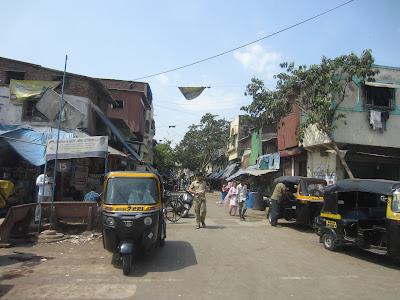
What is involved in arriving at scientific knowledge about the social world? The position I have consistently taken emphasizes contingency and heterogeneity of the social: the social world is a mixture of diverse processes and structures; it is constituted by socially constituted and socially situated actors, leading to ineliminable features of contingency and heterogeneity; and that there are no unified "grand theories" that permit us to capture "the way the social world works". Social phenomena are multi-threaded, multi-causal, and multi-semiotic. So the most we can hope for in the social sciences is to identify some of the threads of change and stability, some of the distinct causes at work, and some of the systems of meaning through which actors frame the world in which they live and act.
So the social sciences can only consist of a large number of separate and largely independent lines of investigation into different strands of social life. And these diverse lines of investigation also correspond to a plurality of methodologies for research. These limited forms of knowledge are enormously valuable, both intellectually and practically -- even though they do not add up to a unified and comprehensive representation of the social world as a whole. Social knowledge is inherently incomplete and incompletable. Weber points to this idea in his essay, "'Objectivity' in Social Science and Social Policy" in The Methodology of The Social Sciences (link):
There is no absolutely "objective" scientific analysis of culture -- or put perhaps more narrowly but certainly not essentially differently for our purposes -- of "social phenomena" independent of special and "one-sided" viewpoints according to which -- expressly or tacitly, consciously or unconsciously -- they are selected, analyzed and organized for expository purposes. (72)
I do not construe this passage as an early version of "post-modernist relativism", but rather Weber's recognition of the inherently open texture of social phenomena. There is no limit to the empirical, theoretical, causal, cultural, and historical research questions that can be formulated with regard to almost any ensemble of social phenomena over time.Consider a particular sociological topic: the nature and dynamics of the 20th-century urban place -- the city. Acquaintance with a range of cities allows us to note that there are aspects of similarity and difference across "cities". This suggests a range of kinds of investigation of urban life. We can study the particulars of specific cities (Mumbai, Bonn, Mexico City, Chicago) through careful case studies. Second, it is promising to engage in comparative studies of aspects of a range of cities that seem to work out differently. How do the public transit systems of Mexico City, Mumbai, and Chicago compare to each other? How does corruption affect the municipal governments of several cities differently? And finally, it is intriguing to consider whether there are some processes and mechanisms that are recur across cities in the modern world, leading to limited but genuine generalizations that can be discovered through quantitative comparisons. Epidemiological findings about the transmission of infectious diseases might be one such area where generalizations across many or all cities can be discovered.
But consider the enormous range of questions that can be asked about cities:
- Why is Chicago located where it is?
- Why are cities located where they are?
- What are the patterns of residence in cities, and what factors explain these patterns?
- How are features of health status distributed across place and population in cities?
- What kinds of transportation exist in the urban environment, and why?
- How are the necessities of life -- food, water, clothing, ... -- provided in adequate quantities to the population of a city?
- How do people in the city make their livings?
- How are urban services provided, funded, and managed?
- How is the urban population governed?
- How is civil peace maintained in the urban population?
- Why did Detroit, Newark, and Cleveland experience uprisings/race riots in 1967 and 1968?
- What meanings are associated with the design and architecture of a given city by its residents?
- What kinds and frequencies of crimes occur in the city?
- What factors enhance or inhibit crime in cities?
- ...
This discussion supports the conclusion that the open-endedness of the social world is quite different from the natural world. Once scientific attention turned to the question of the behavior and properties of gases, there were a number of different avenues that could be pursued; but ultimately, we can understand the behavior of gases in terms of a few simple laws and mechanisms: molecules, elastic collisions, intermolecular forces, kinetic energy, entropy, laws of thermodynamics, and perhaps a bit of the mathematics of complex systems to explain local patterns of turbulence. But there is no hidden mystery in the behavior of a gas. The behavior of a population in a city over the stretch of a century is entirely different from this simple story about gases. The mechanisms, meanings, and dynamics of a social population can be investigated along countless different dimensions, and there are no fixed and final "laws of social interaction" that ultimately allow the explanation of the social ensemble -- the city. And this open texture of sociological investigation of the city seems to be true for virtually every aspect of social life.
(Here are some additional posts on cities illustrating the range of social-science studies of urban life that is possible; link, link, link, link, link.)
